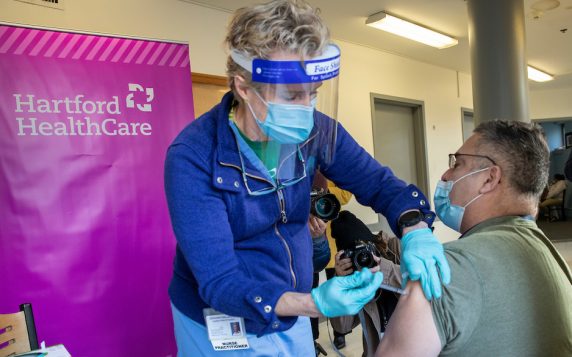On Sept. 9, President Joe Biden announced sweeping new mandates for the COVID-19 vaccine:
- All private-sector businesses with more than 100 employees must mandate vaccines or weekly testing for their workforces.
- Federal employees and contractors that work with the government are now required to receive the vaccine and will no longer have the option of regular COVID testing.
- All healthcare facilities that receive federal Medicaid or Medicare funding must mandate vaccines for their workforces with no testing option as an alternative.
- All staff at Head Start programs run by the federal government must be vaccinated. The order extends to schools run by the Bureau of Indian Affairs and the Department of Defense.
Dr. Ulysses Wu, Hartford HealthCare’s System Director of Infection Disease and Chief Epidemiologist, said he considers Biden’s new vaccine mandates “a great first step.”
“We are at this point where he has to make a speech or he has to make a mandate because people are dying,” Wu said. “Because it’s not happening to you doesn’t mean it’s not happening.”
As of Sept. 9, 85.3 percent of eligible Connecticut residents had received at least one COVID-19 vaccine shot, while 76.6 percent were fully vaccinated, making Connecticut one of the most vaccinated states in the country. Wu said every marginal increase in vaccination rate leaves the state less susceptible to another coronavirus surge.
Chris DiPentima, president and chief executive of the Connecticut Business & Industry Association, the state’s largest business lobbying group, applauded the new mandates. “We need to get everyone vaccinated. It’s the best way of defeating the pandemic and starting our economic recovery,” he told the Hartford Courant.
A nationwide survey of 961 employers by Arlington, Virginia-based consulting firm Willis Towers Watson released this month indicated that the number of businesses requiring vaccination is expected to surge by the end of year. More than half of employers could have one or more vaccine mandate requirements, ranging from restrictions on access to common areas such as cafeterias to portions of a workforce or all employees. The survey’s results were up dramatically from 21 percent in the spring.



